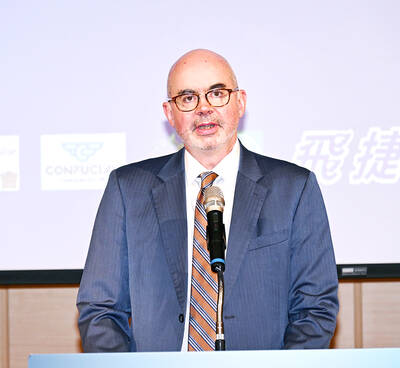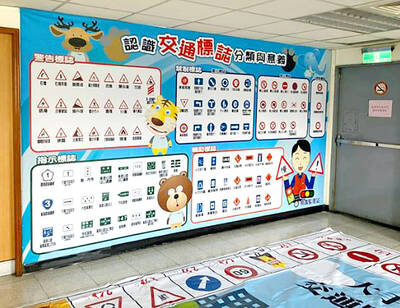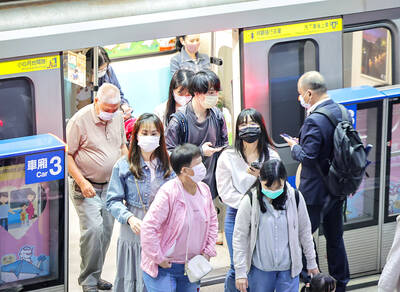Japanese business leaders said yesterday they were looking to Asia for growth and banking on Japan’s strength in technology to keep an emerging recovery going in the coming year.
“Expanding in Asia is going to drive growth,” Fujio Mitarai, chief executive of Japanese camera and equipment maker Canon Inc told reporters at an annual New Year’s gathering for business leaders.
The celebration at a Tokyo hotel was organized by corporate lobbies, including Keidanren, which Mitarai heads, and the Chambers of Commerce for Japan and Tokyo.
In the past, businesses in Japan mainly looked to the US to furnish growth.
That is changing as prospects dim for exports to the world’s biggest economy after the financial crisis. Growth is also tepid in Japan and Europe and executives have their eyes on the purchasing power of Asia’s growing middle class.
Japanese Prime Minister Yukio Hatoyama, who attended the party, said Japan couldn’t rely on the old-style growth policies and must create new businesses, such as health services and medicine.
“Japan can lead the world by focusing on technology and science,” he said.
Many companies are rapidly shaping strategies to woo consumers in emerging markets, developing products — and setting their prices lower — to cater to their needs.
Japan’s exports to Asia totaled ¥2.7 trillion (US$29 billion) in November — more than the ¥1.544 trillion to North America and Western Europe combined, the finance ministry said.
Yesterday, Toyota Motor Corp and Honda Motor Co showed concept models for a small vehicle for the Indian market.
Toyota, the world’s top automaker, said the vehicle would be produced starting late this year. Honda, Japan’s No. 2 automaker, said its offering would go on sale next year, and also be available in Thailand.
Such offerings are expected to be under ¥1 million, cheaper than models sold in Japan, the US and Europe.
One by one, the executives at the gathering said they were cautiously optimistic for a recovery led by Asian growth. They also boasted Japan’s technological prowess holds the key for success.
“There are so many strengths we can offer the world, especially in ecological technology. We need to get serious about pitching these strengths,” said Nissan Motor Co chief operating officer Toshiyuki Shiga, pointing to electric and hybrid vehicles not only from Nissan, but also from its Japanese rivals.
The Chinese market alone could make up as much as 40 percent of the profit that Honda rakes in for the fiscal year through March, major business daily the Nikkei reported.
Masayasu Toyohara, executive overseeing consumer electronics at Toshiba Corp, said the company was busy hiring engineers in China to develop washing machines and refrigerators that appeal to Chinese consumers.
Toshiba now controls only 1 percent of China’s home appliance market, but hopes to boost that to about 5 percent in three or four years, he said.
Pharmaceutical companies are also counting on China.
“Growth in China is absolutely certain,” Toichi Takenaka, who heads a federation of Japanese drug makers, said on the sidelines of the New Year’s gathering. “Growth in the pharmaceutical industry always parallels rise in people’s income.”

RESILIENCE: Deepening bilateral cooperation would extend the peace sustained over the 45 years since the Taiwan Relations Act, Greene said Taiwan-US relations are built on deep economic ties and shared values, American Institute in Taiwan (AIT) Director Raymond Greene said yesterday, adding that strengthening supply chain security in critical industries, enhancing societal resilience through cooperation and deepening partnerships are key to ensuring peace and stability for Taiwan in the years ahead. Greene made the remarks at the National Security Youth Forum, organized by National Taiwan University’s National Security and Strategy Studies Institution in Taipei. In his address in Mandarin Chinese, Greene said the Taiwan-US relationship is built on deep economic ties and shared interests, and grows stronger through the enduring friendship between

GAINING STEAM: The scheme initially failed to gather much attention, with only 188 cards issued in its first year, but gained popularity amid the COVID-19 pandemic Applications for the Employment Gold Card have increased in the past few years, with the card having been issued to a total of 13,191 people from 101 countries since its introduction in 2018, the National Development Council (NDC) said yesterday. Those who have received the card have included celebrities, such as former NBA star Dwight Howard and Australian-South Korean cheerleader Dahye Lee, the NDC said. The four-in-one Employment Gold Card combines a work permit, resident visa, Alien Resident Certificate (ARC) and re-entry permit. It was first introduced in February 2018 through the Act Governing Recruitment and Employment of Foreign Professionals (外國專業人才延攬及雇用法),

The Ministry of Transportation and Communications yesterday said that it would redesign the written portion of the driver’s license exam to make it more rigorous. “We hope that the exam can assess drivers’ understanding of traffic rules, particularly those who take the driver’s license test for the first time. In the past, drivers only needed to cram a book of test questions to pass the written exam,” Minister of Transportation and Communications Chen Shih-kai (陳世凱) told a news conference at the Taoyuan Motor Vehicle Office. “In the future, they would not be able to pass the test unless they study traffic regulations

‘COMING MENACINGLY’: The CDC advised wearing a mask when visiting hospitals or long-term care centers, on public transportation and in crowded indoor venues Hospital visits for COVID-19 last week increased by 113 percent to 41,402, the Centers for Disease Control (CDC) said yesterday, as it encouraged people to wear a mask in three public settings to prevent infection. CDC Epidemic Intelligence Center Deputy Director Lee Chia-lin (李佳琳) said weekly hospital visits for COVID-19 have been increasing for seven consecutive weeks, and 102 severe COVID-19 cases and 19 deaths were confirmed last week, both the highest weekly numbers this year. CDC physician Lee Tsung-han (李宗翰) said the youngest person hospitalized due to the disease this year was reported last week, a one-month-old baby, who does not